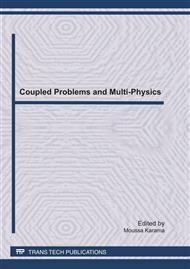p.23
p.33
p.43
p.53
p.61
p.71
p.81
p.91
p.101
The Effect of Longitudinal Slope’s Variation on Sedimentation in a Meandering River
Abstract:
In the present work, we conducted a numerical simulation of flow and sediment transport and deposition in a meandering river. The corresponding results were compared to experimental data of a physical river that was assumed to have a 0.001 longitudinal slope. A three-dimensional numerical model was simulated by means of the commercial FLUENT code. The latter used the RNG k-ε turbulence closure model whose ability to reproduce the experiments was compared to further models. The lagrangian tracking of particles (DPM) was performed. The adopted grid was non uniform, particularly refined on the wall zones where the sedimentation of particles took place. The hydrodynamic section of the model was checked using experimental data. The comparison of the sediment concentration numerical result gave a satisfying agreement with the experimental data. Once the model validated, we studied the effects of varying longitudinal slope on deposition of particles under a flow velocity of 0.2 m/s. The tested values are 0.001 and 0.0045.
Info:
Periodical:
Pages:
61-69
Citation:
Online since:
July 2011
Authors:
Keywords:
Price:
Сopyright:
© 2011 Trans Tech Publications Ltd. All Rights Reserved
Share:
Citation:


